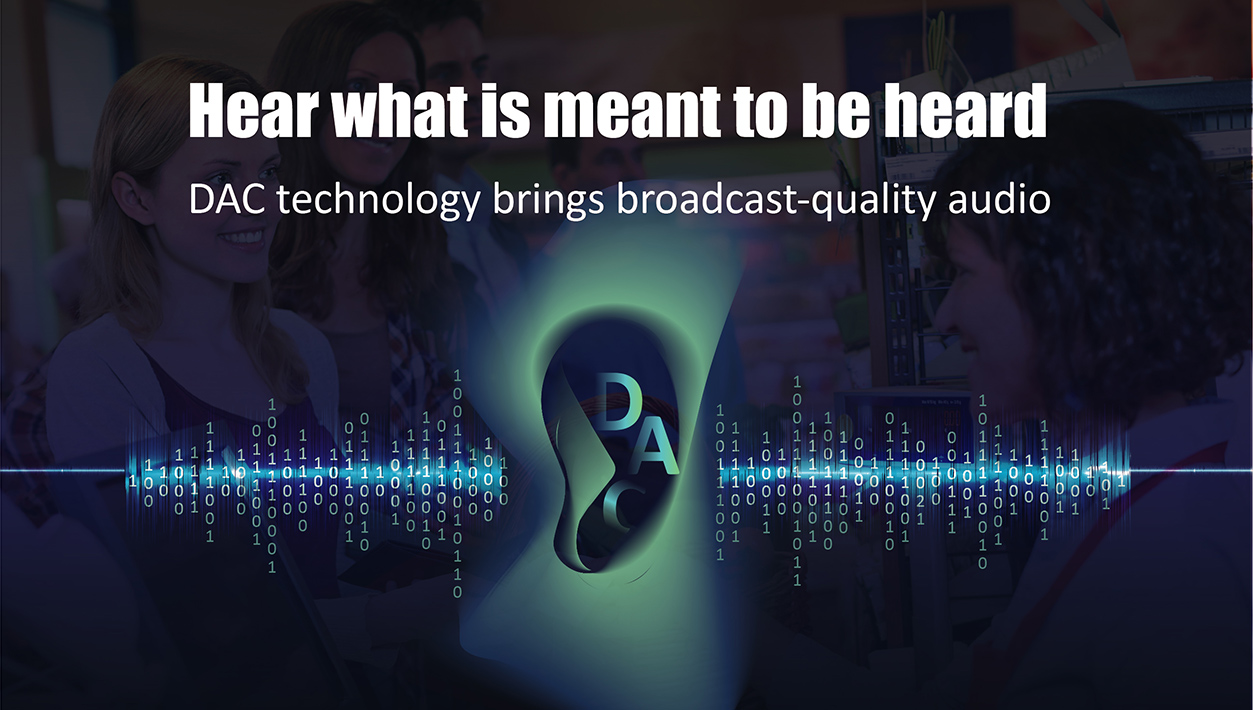Surveillance technology is evolving fast, but not every business or institution wants—or can afford—to rip out existing coaxial infrastructure for IP cameras. That’s where HDCVI technology, pioneered by Dahua Technology, makes a significant impact. Let’s dive into what HDCVI and HDCVI DAC technology are, and how they’re revolutionizing HD-over-coax video surveillance.
What is HDCVI Technology?
High Definition Composite Video Interface (HDCVI) is a Dahua-patented video transmission standard that allows high-definition video to travel over traditional coaxial cables. Introduced in 2012, it was the first technology to deliver 4K resolution over coax and remains a powerful choice for upgrading older analog CCTV systems.
Key Advantages of HDCVI:
-
Ultra High Definition: Supports up to 4K, producing sharp, detailed images that capture even the smallest details. Whether you’re monitoring a wide outdoor area or zooming in on license plates, HDCVI’s clarity stands out.
-
4-in-1 Signal Transmission: HDCVI transmits video, audio, data, and power over a single coaxial cable. This reduces installation complexity and cost.
-
Long-Distance Transmission: Dahua’s testing shows HDCVI reliably transmits high-definition signals over hundreds of meters without signal loss, perfect for large sites.
-
Seamless Upgrades: HDCVI is compatible with other coax technologies (AHD, TVI, CVBS) and even integrates with IP systems. Users can reuse existing cables and infrastructure while gaining modern features.
With product lines ranging from the premium Pro Series to cost-effective Cooper Series, Dahua’s HDCVI cameras offer options for various budgets and project scales.
Enter HDCVI DAC Technology: Audio-Over-Coax
Video alone can’t always tell the whole story. Think of a dispute at a retail counter or a heated conversation in a school hallway. Audio provides crucial context—but in many older systems, adding audio required separate cables, extra labor, and often led to poor synchronization with video.
HDCVI DAC (Digital Audio-over-Coax) technology changes this by transmitting digital audio signals directly over the same coaxial cable as video.
How HDCVI DAC Works
Traditional analog audio transmission is prone to noise and interference. Dahua’s HDCVI DAC converts analog audio into a digital signal, ensuring:
-
Lossless, broadcast-level quality
-
Precise audio-video synchronization
-
Lower noise through digital filtering algorithms
-
Longer transmission distances without signal degradation
DAC technology uses techniques like multilevel modulation, which improves data capacity and reduces errors, ensuring high-fidelity audio even in challenging environments.
Real-World Applications of HDCVI DAC
Resolving Disputes in Retail or Reception Areas
Without audio, a security camera can only show gestures or body language during an argument. With HDCVI DAC, businesses can record conversations alongside video, offering crucial evidence for resolving disputes.
Detecting Abnormal Behavior in Schools or Banks
Audio helps security staff detect raised voices, threats, or distress that video alone might miss. In sensitive environments like schools or financial institutions, synchronized high-quality audio can be invaluable for quick, effective responses.
Future-Proofing Surveillance with HDCVI
HDCVI and DAC technology represent a practical bridge between legacy analog systems and modern high-definition surveillance. For organizations with significant investments in coax infrastructure, they offer:
-
High-resolution video without replacing cabling
-
Simplified installation thanks to four signals over one cable
-
New capabilities like audio surveillance and IoT integration
-
Flexible upgrades without complete system overhauls
Whether you’re managing a retail chain, a large campus, or critical infrastructure, Dahua’s HDCVI solutions ensure your surveillance systems stay competitive without blowing the budget on new wiring.
Frequently Asked Questions (FAQ)
1. Can HDCVI cameras work with older DVR systems?
Not directly. HDCVI requires a compatible XVR or DVR that supports HDCVI signals. However, many modern recorders support multiple formats, easing the upgrade path.
2. How far can HDCVI signals travel over coax?
Distance depends on resolution and cable quality. For instance, 4K video may reach 300m over RG6 coax, while lower resolutions can travel even farther.
3. Is HDCVI DAC audio truly “lossless”?
Yes—because it’s transmitted digitally rather than as analog waveforms, HDCVI DAC preserves audio quality and minimizes noise or distortion.
4. Can HDCVI systems integrate with IP cameras?
Absolutely. Hybrid XVRs from Dahua support both HDCVI and IP inputs, allowing mixed deployments.
5. Does HDCVI cost less than switching to a full IP system?
Generally, yes. Reusing coax infrastructure saves on cabling costs, and HDCVI cameras often cost less than comparable IP cameras with the same specs.
Conclusion
Dahua’s HDCVI and DAC technologies are game-changers for organizations wanting modern features without tearing out old coax systems. From 4K video to crystal-clear audio over a single cable, they deliver innovation with practicality—and help businesses protect people and assets more effectively than ever.









